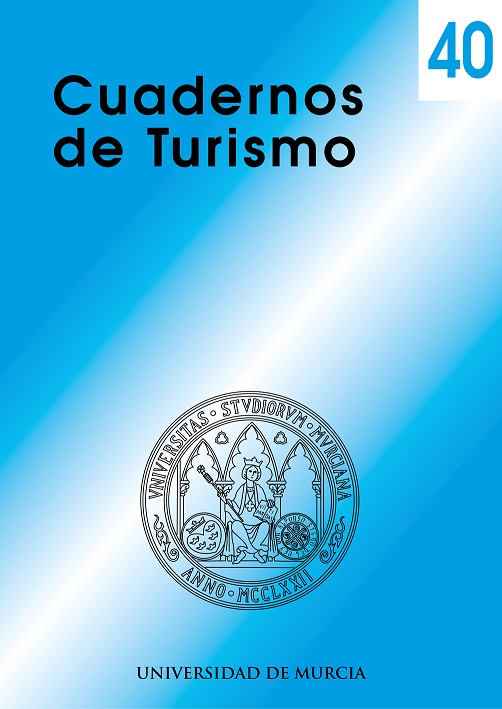Adaptive strategies for inland touristic destinations (Sil Canyon, Galicia, Nw Spain)
Resumen
Tourism potential is greatly related to destinations’ reorganization and innovation abilities. Throughout the last fifteen years, tourism evolution at the western section of the Sil Canyon (NW Spain) has reflected the transformations facing times of crisis. By assuming tourism as a complex adaptive system, the aims of this research about an inland destination were focused on the touristic strategies interpretation. The destination evolution is carried out, including the narratives by key actors. The rural tourism strategies change by integrating nature-based and cultural tourism strategies.Descargas
-
Resumen524
-
PDF 865
-
PDF865
Las obras que se publican en esta revista están sujetas a los siguientes términos:
1. El Servicio de Publicaciones de la Universidad de Murcia (la editorial) conserva los derechos patrimoniales (copyright) de las obras publicadas, y favorece y permite la reutilización de las mismas bajo la licencia de uso indicada en el punto 2.
2. Las obras se publican en la edición electrónica de la revista bajo una licencia Creative Commons Reconocimiento-NoComercial-SinObraDerivada 3.0 España (texto legal). Se pueden copiar, usar, difundir, transmitir y exponer públicamente, siempre que: i) se cite la autoría y la fuente original de su publicación (revista, editorial y URL de la obra); ii) no se usen para fines comerciales; iii) se mencione la existencia y especificaciones de esta licencia de uso.
3. Condiciones de auto-archivo. Se permite y se anima a los autores a difundir electrónicamente las versiones pre-print (versión antes de ser evaluada) y/o post-print (versión evaluada y aceptada para su publicación) de sus obras antes de su publicación, ya que favorece su circulación y difusión más temprana y con ello un posible aumento en su citación y alcance entre la comunidad académica. Color RoMEO: verde.





_.jpg)








